The right lighting can transform your dining room, setting the perfect ambiance for both everyday meals and special occasions. A well-designed lighting scheme enhances the mood and the aesthetic of your space. While a central ceiling fixture helps with ambient light, incorporating accent lighting and even candles can create a more intimate atmosphere. Whether you’re looking for a classic, modern, or eclectic look, here are some ideas for illuminating your dining area.
1. Make Your Dining Room Twinkle With a Classic Chandelier
A classic chandelier, characterized by multiple arms extending from a central frame, remains an excellent choice for formal dining rooms. Crystal chandeliers, in particular, offer a timeless look as the cut glass catches and reflects light, creating a warm and welcoming atmosphere. When selecting a chandelier, choosing the right size is important. A general rule of thumb is to choose a fixture with a circumference that’s about one-half to two-thirds the width of your dining table.
For those who enjoy DIY projects, installing a chandelier can be a rewarding experience. However, if you’re unsure about electrical work, it’s always best to consult a professional to ensure safety and proper installation.
2. A Waterfall Chandelier Feature for a Fanciful Dining Room
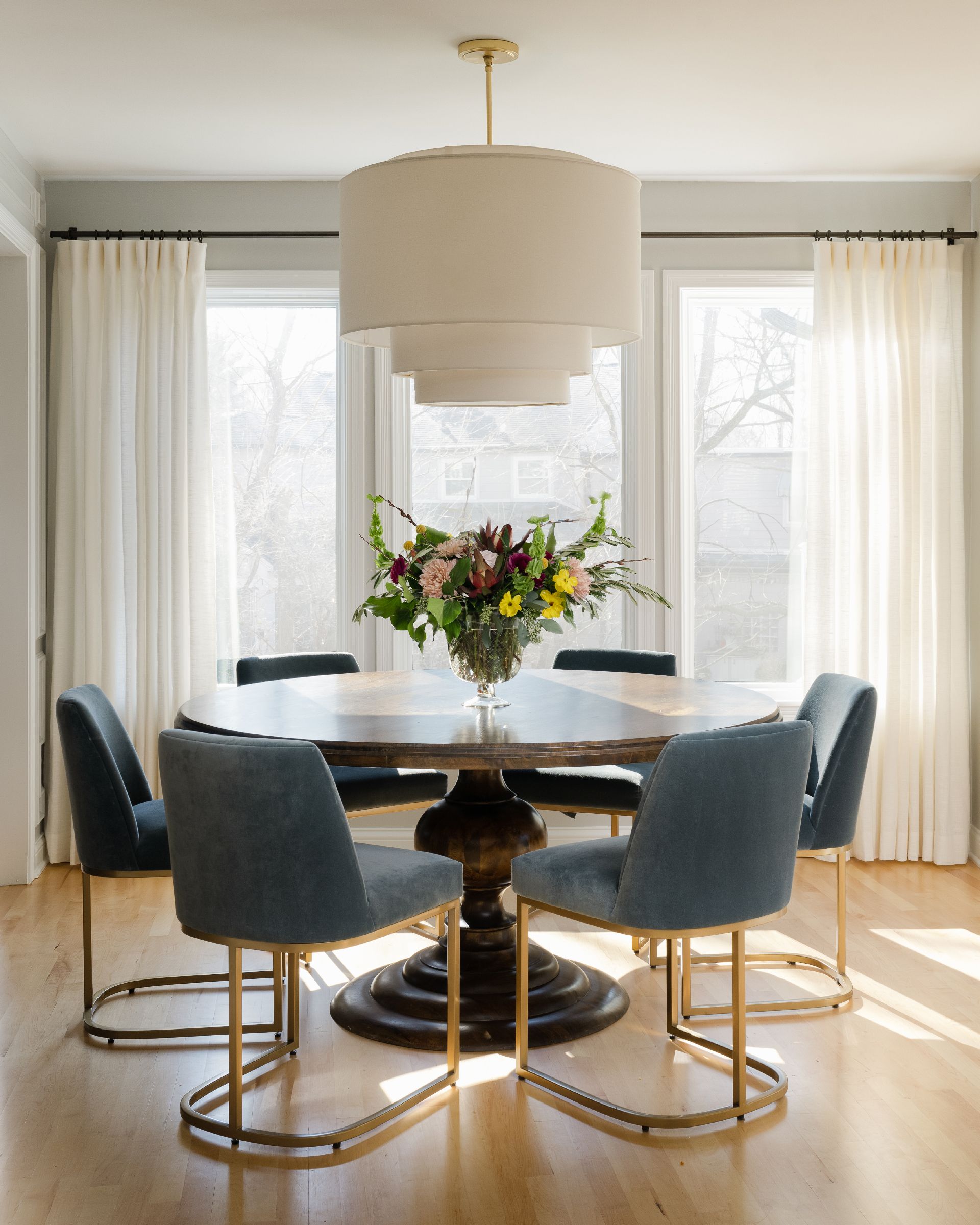
For those seeking a dramatic focal point, a waterfall chandelier offers unparalleled elegance. These fixtures feature a series of tiered shapes that descend in cascading layers, often utilizing crystals or other transparent materials to create a stunning visual effect. The design allows light to dance and refract, casting beautiful patterns throughout the room.
Waterfall chandeliers work best in spaces with high ceilings, as their elaborate structure requires ample vertical space. They’re particularly well-suited to formal settings decorated in traditional European styles, where they can serve as a stylish centerpiece. When selecting a waterfall chandelier, consider the overall scale of your room to ensure the fixture complements the space.
3. Midcentury Dining Room With a Sputnik Chandelier

If you love midcentury modern style, a Sputnik chandelier offers the perfect blend of retro charm and contemporary appeal. Named for the first artificial earth satellite launched in 1957, it’s characterized by multiple straight rods extending from a central sphere. Each rod is tipped with a single bulb to create a striking starburst effect.
The clean lines and geometric shapes of Sputnik chandeliers complement the sleek furniture and cool color palettes typical of midcentury interiors. They work particularly well in dining rooms with minimalist decor without overwhelming the space. When choosing a Sputnik chandelier, consider the size of your dining table and the height of your ceiling to ensure proper proportions. This design also allows you to incorporate other midcentury elements like bold color schemes and contemporary furniture.
4. Even Illumination in a Dining Room With Multiple Pendants
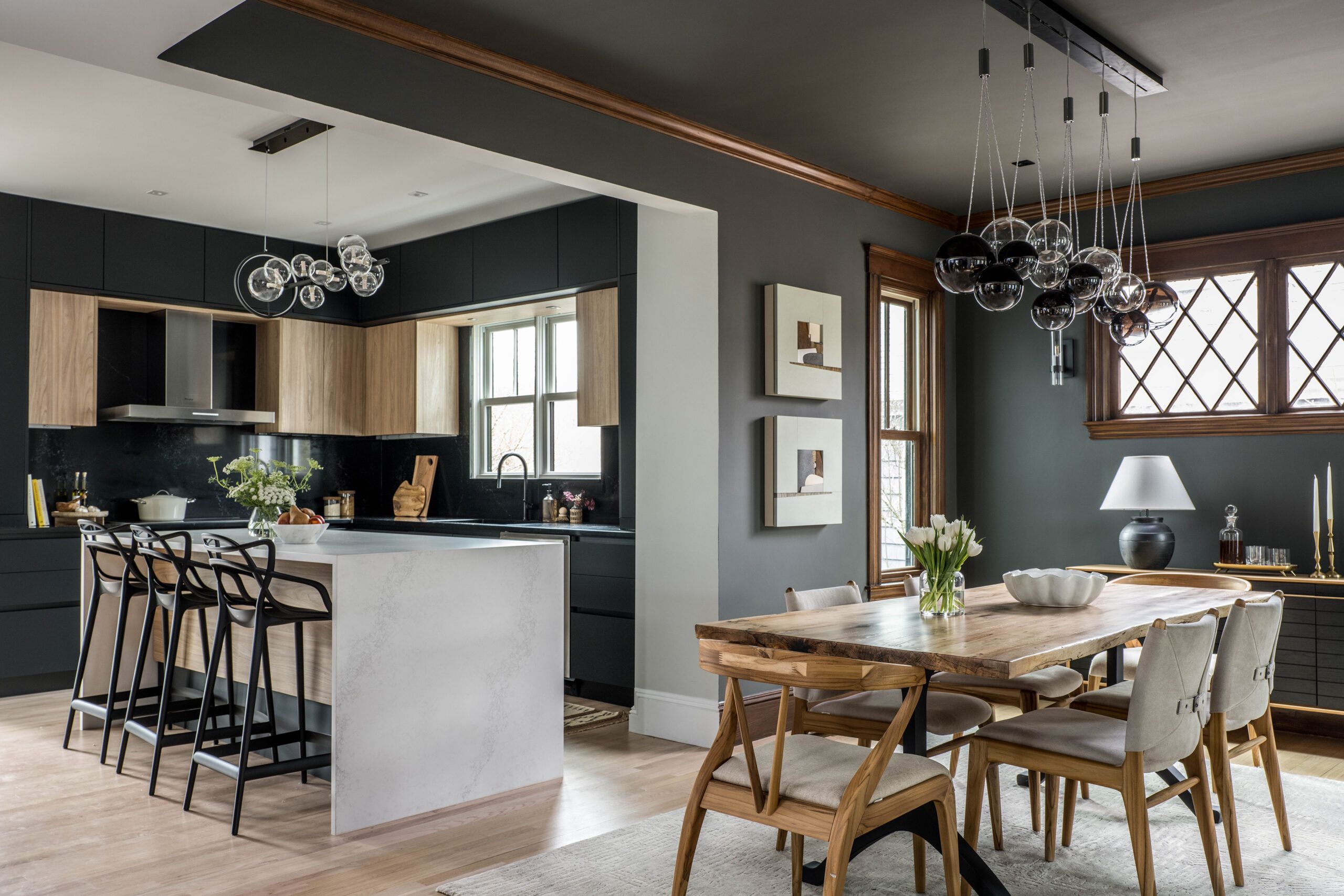
While pendant lights are often associated with kitchen islands, they can be equally effective in dining rooms, especially over long rectangular tables. Using two or three pendants presents even illumination along the entire length of the table, benefiting diners seated at both ends. This arrangement also allows for creative customization, as you can play with different heights, shapes, and sizes to create a unique lighting composition.
When selecting pendant lights for your dining room, consider coordinating the shades’ color and material with other design elements in the space. This could mean matching the metal finish to your hardware, echoing the texture of your upholstery, or complementing the tones in your wallpaper or paint. The versatility of pendant lighting makes it suitable for various décor styles, from rustic farmhouse to sleek contemporary.
5. Dining Dome Intimacy
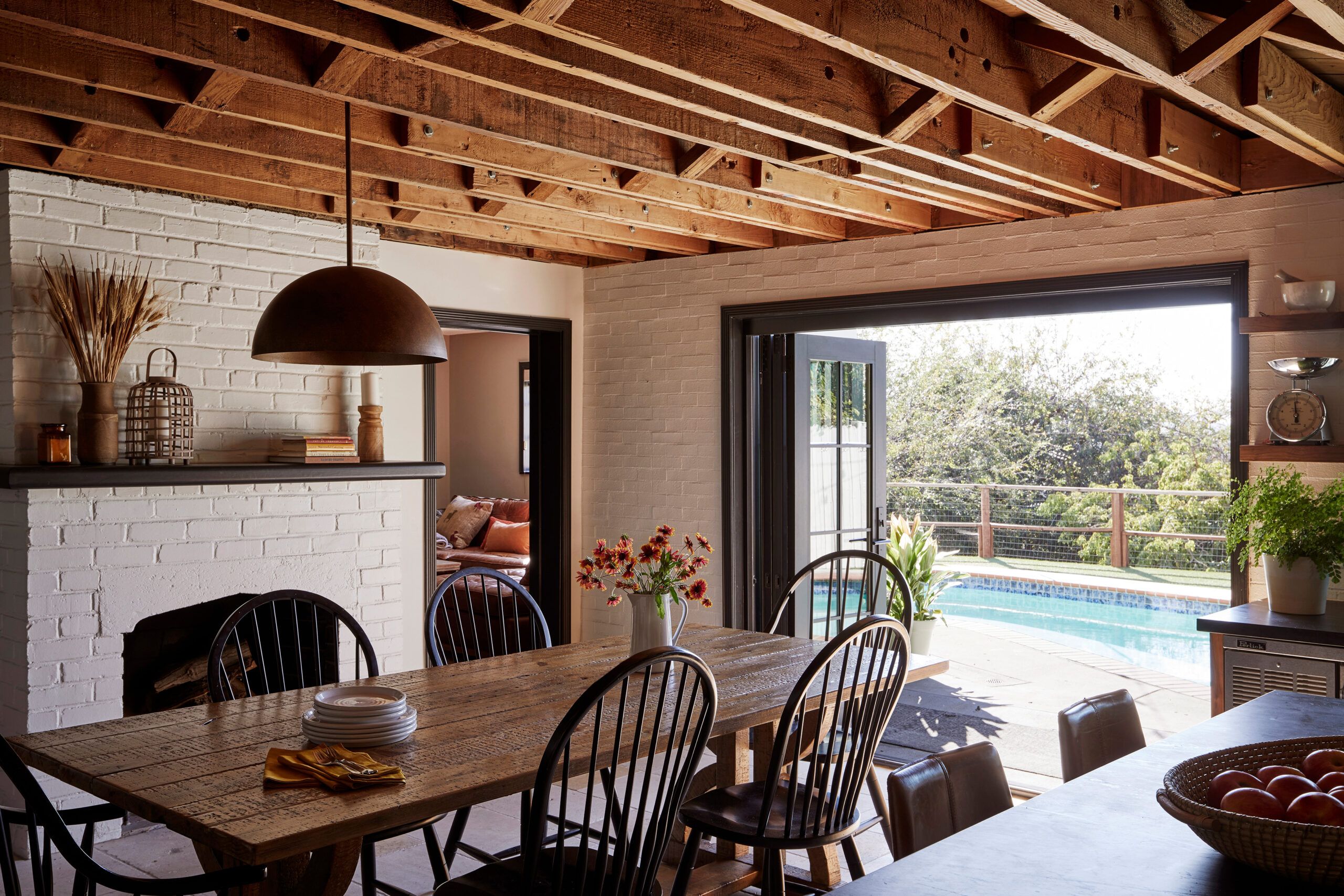
A large dome light fixture can create an intimate atmosphere in your dining room, particularly when placed over a round or oval table. The curved shape of the dome naturally draws people together, fostering conversation and connection during meals. In rooms with predominantly angular furniture, a dome light can provide a contrast, softening the overall look of the space.
The material of the dome shade plays a significant role in defining the room’s ambiance. A metal dome can add an industrial edge, while fabric or wicker options create a more casual, country-inspired feel. Glass domes, whether clear, frosted, or textured, can add vintage charm or contemporary sophistication depending on their design. Dome lights can also be complemented with additional lighting elements to create a more layered and nuanced lighting scheme.
When installing a dome light, remember to follow the general rule of hanging dining room fixtures at least 30 inches above the table surface. This ensures comfortable headroom while maintaining the fixture’s visual impact. Dome lights also provide a diffused lighting effect, which can be ideal for setting a relaxing and homey atmosphere.
6. Long on Light with a Suspension Fixture for a Modern Dining Room
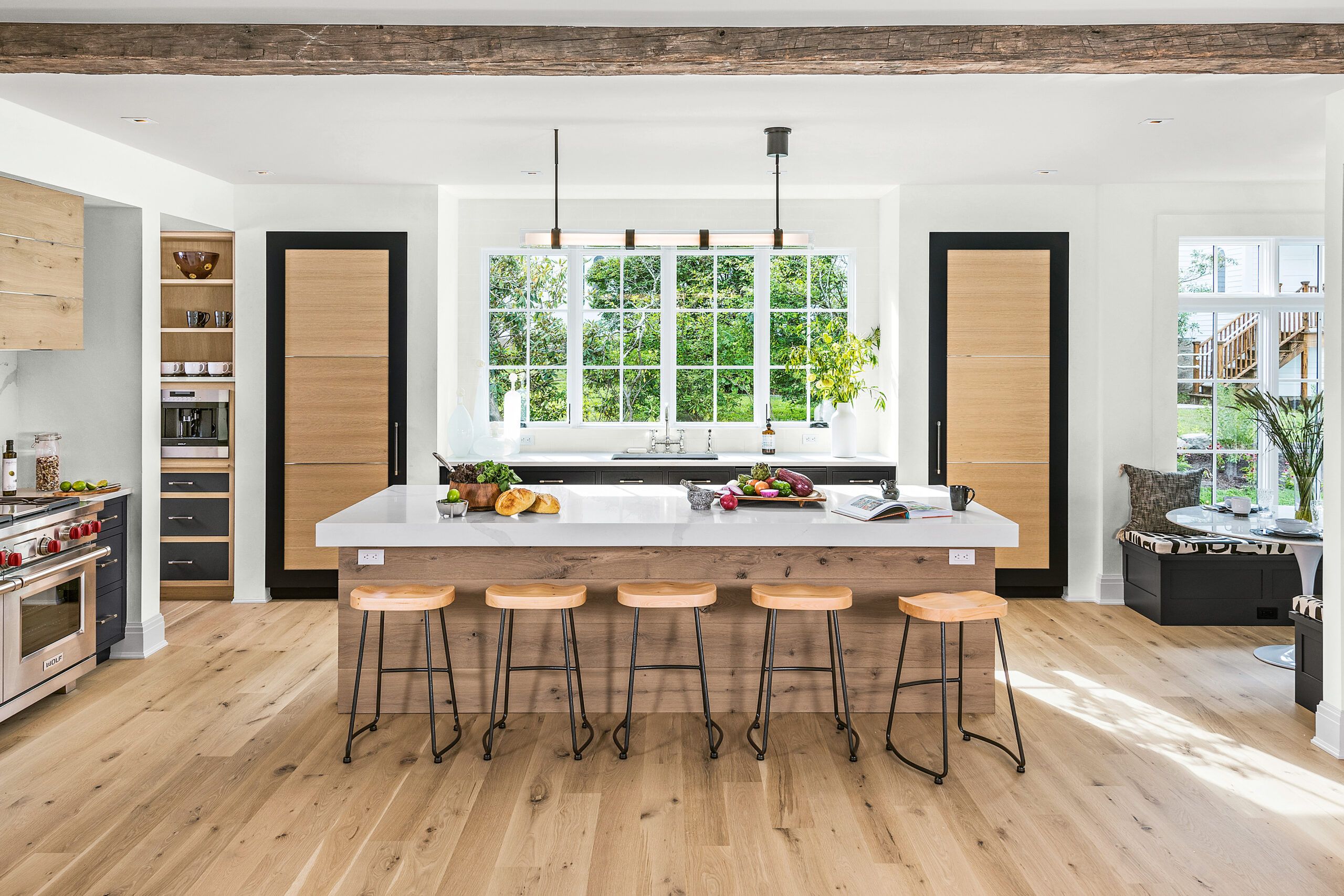
For modern dining spaces with long rectangular tables, a linear suspension fixture can be an ideal lighting solution. These elongated fixtures complement the table’s shape while providing even illumination along its entire length. Linear lights come in various styles, from minimalist single bars to more complex designs featuring multiple light sources. Their unobtrusive design allows them to blend seamlessly with various modern decor elements.
Sleek metal options in chrome or brushed nickel can enhance a contemporary style, while wooden versions add warmth and can complement a wooden dining table. Some linear fixtures offer the added benefit of both upward and downward lighting, allowing you to create layered illumination that enhances the overall ambiance.
7. Going Global With Globe Lights
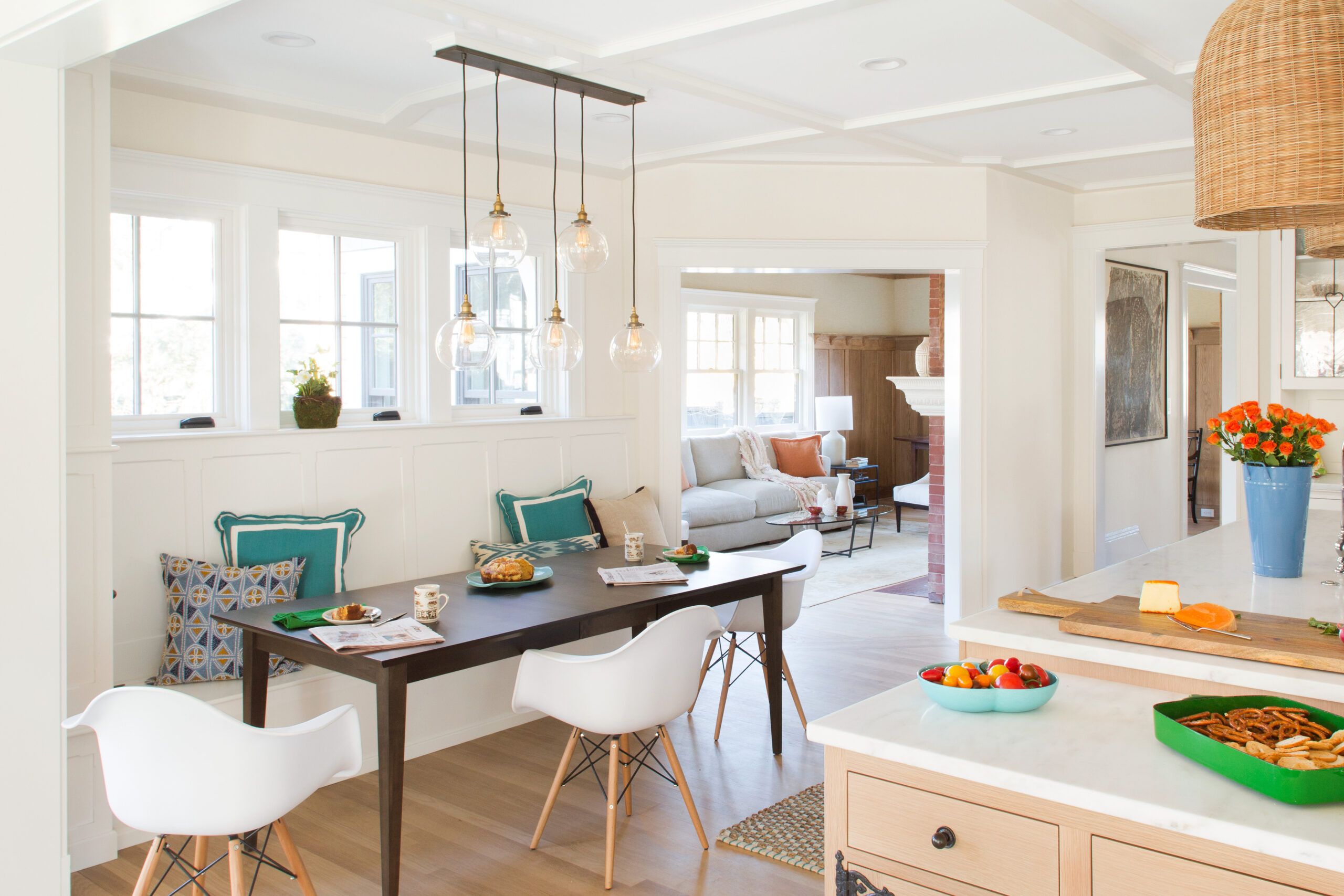
Globe lights offer a versatile and timeless option for dining room illumination. Their simple, spherical shape works well in various décor styles, from contemporary to eclectic and even industrial settings. The clean lines of globe lights make them an excellent choice for those who prefer a more understated lighting fixture that doesn’t compete with other design elements in the room.
Globe lights come in a wide range of sizes, materials, and configurations. You might opt for a single large globe as a statement piece or group several smaller globes at varying heights for a more dynamic look. Glass globes can create a light, airy feel, while metal or mesh versions add texture and visual interest. Some globe lights even feature internal patterns or textures that cast intriguing shadows, adding another layer of visual appeal to your dining space.
8. Accent Your Dining Room With a Set of Sconces
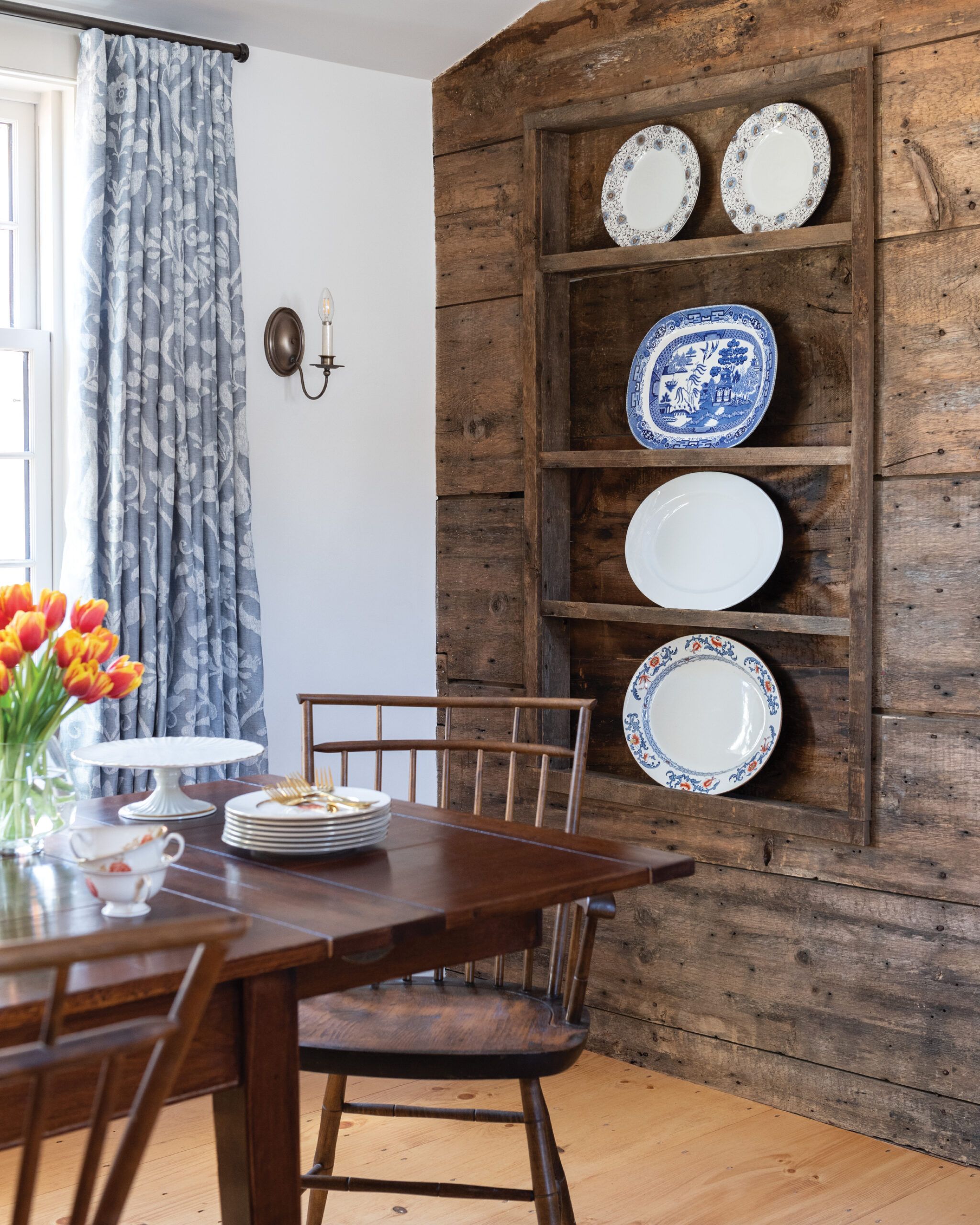
While task lighting is rarely needed in dining rooms, wall sconces can create a layered lighting scheme. Sconces provide accent lighting that can highlight architectural features, artwork, or decorative elements in your dining space. You can install a sconce on either side of a sideboard or hutch, illuminating serving areas and adding depth to the room’s lighting design.
When selecting sconces for your dining room, you have the option to match them with your central ceiling fixture for a cohesive look, or choose contrasting styles for a more eclectic approach. Consider the scale of your room and existing fixtures when choosing sconce size—they should complement rather than compete with other lighting elements. Dimmable sconces offer added versatility, allowing you to adjust the ambiance for different occasions. They can also be used to create focal points and draw attention to specific areas of your dining room.
9. Put a Ring on the Room With a Ceiling Medallion
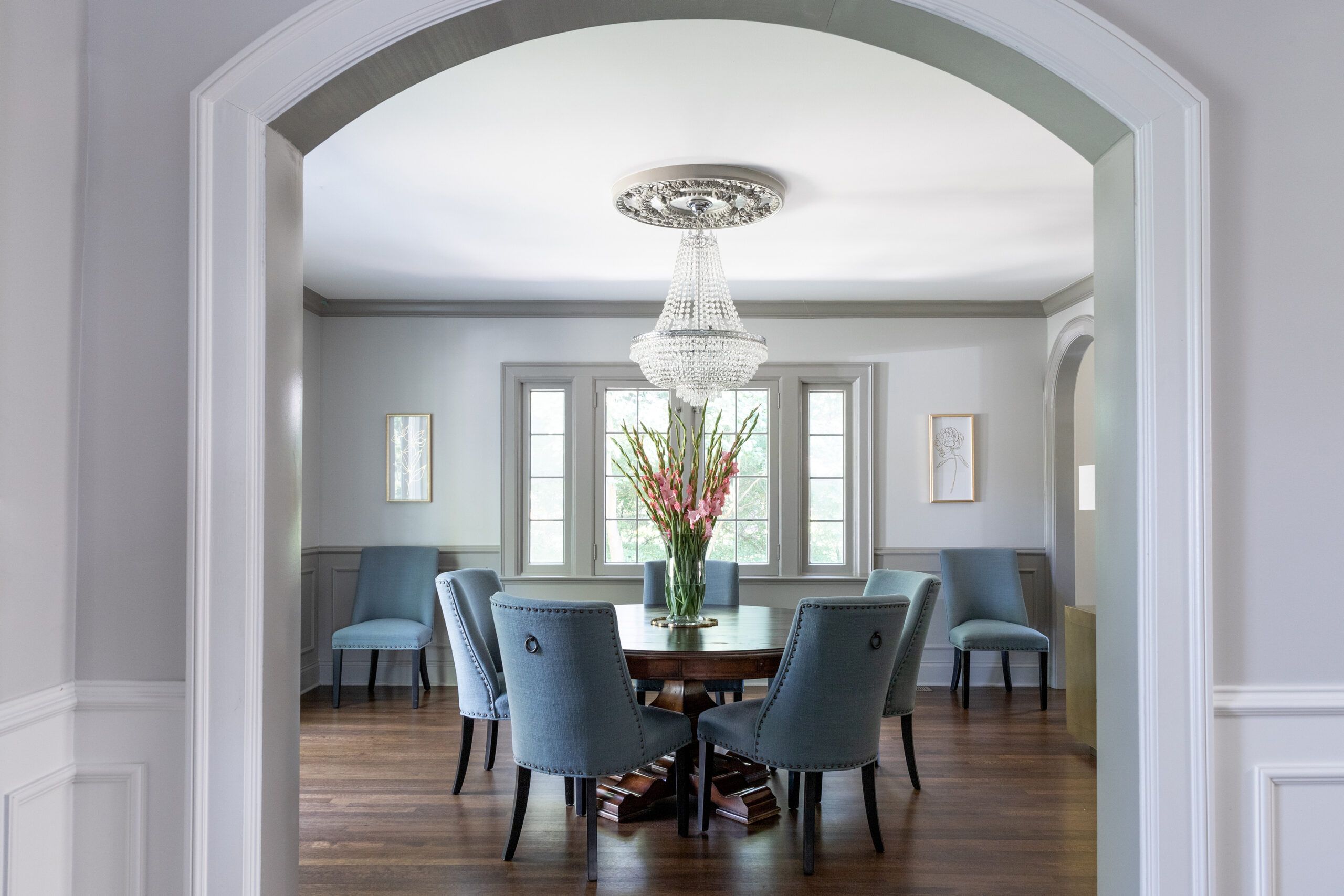
A ceiling medallion can add a touch of elegance and architectural interest to your dining room, drawing attention to your lighting fixture and enhancing its impact. Originally crafted from plaster, most medallions today are available in a variety of materials, including wood, polyurethane, and even fiberglass, offering options to suit different budgets and installation preferences.
The style of your medallion should complement both your lighting fixture and your overall room decor. For a traditional or Victorian-inspired space, consider an intricate, ornate design. In more contemporary settings, a simple medallion with clean lines and minimal detailing can add a more subtle touch. When selecting a medallion, consider its size in relation to both your light fixture and the room itself. A general rule to remember is to divide the square footage of your room by seven to determine the ideal diameter of your medallion in inches.
10. A Flickering Flourish to Your Dining Room With Candles
Candles can serve as the perfect finishing touch to your dining room lighting scheme, adding warmth and intimacy. While you might not use them for everyday meals, candles can transform the atmosphere for dinner parties or romantic evenings. The soft, amber glow of candlelight flatters skin tones and creates a cozy ambiance.
There are numerous ways to incorporate candles into your dining room decor. For a classic look, arrange a few elegant tapered candles in silver or crystal candlesticks as a centerpiece. For a more rustic or casual vibe, group chunky pillar candles of varying heights on a wooden tray. If you’re aiming for drama, consider a grand candelabra as a statement piece. Battery-operated LED candles can provide a similar effect with added safety and convenience, especially in households with children or pets.
All About Bulbs
Choosing the right light bulbs will help you achieve the desired ambiance in your dining room. Two key factors to consider are the color temperature (measured in Kelvins) and brightness (measured in lumens) of the bulbs.
Color temperature affects the perceived warmth or coolness of the light. For dining rooms, aim for bulbs with a lower Kelvin rating (between 2,700 to 3,000K) to create a warm, inviting atmosphere. These bulbs emit a soft, yellow-white light that enhances skin tones and food presentation.
In terms of brightness, dining rooms generally benefit from moderate lighting levels. Aim for bulbs that produce between 3,000 and 6,000 lumens in total for the room. This provides enough light for comfortable dining without being overly bright or harsh.
Dimmable bulbs offer the flexibility to adjust lighting levels for different occasions. However, you should ensure that your chosen bulbs are compatible with your dimmer switch. Installing a dimmer switch is a relatively simple DIY project that can greatly enhance your dining room’s lighting versatility.
Consider energy-efficient options like LED bulbs, which provide long-lasting performance and reduced electricity bills. While these may have a higher initial cost, their longevity and energy savings make them a practical choice for many homeowners.

